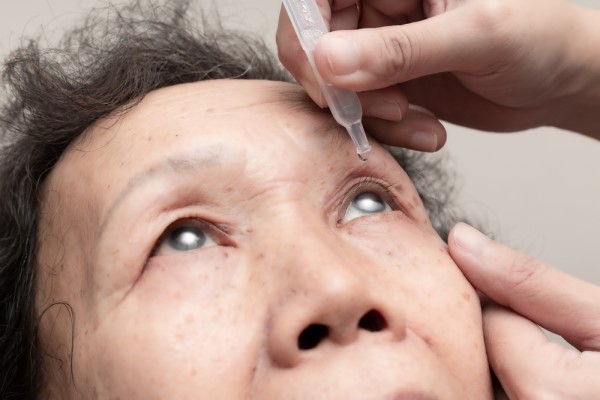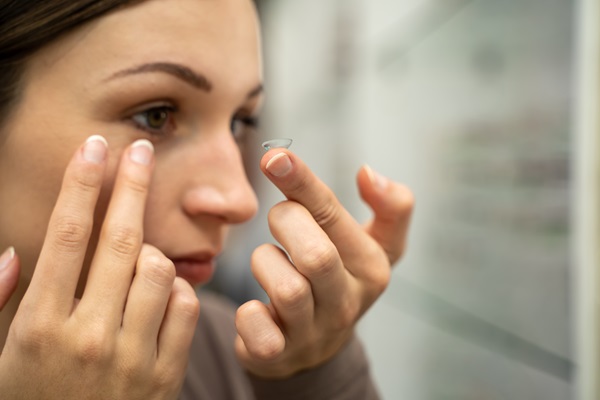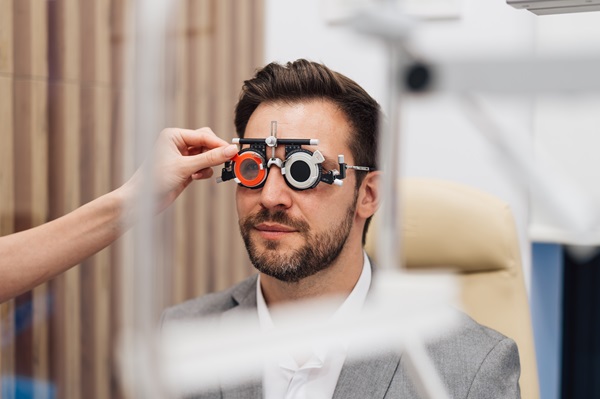Glaucoma Treatment Options From an Optometrist

Glaucoma is an eye disease in which fluid buildup damages the optic nerve. If untreated, it can lead to irreversible partial or full blindness. This makes early glaucoma treatment critical in protecting the eye's overall health. This article will cover what glaucoma is and how to treat it.
Diagnosing glaucoma
An optometrist can diagnose glaucoma through a series of eye tests. They will look for damage to the optic nerve, typically through a dilated eye exam. Imaging tests may also reveal optic nerve damage. The optometrist will likely conduct a visual field test, as peripheral vision loss is an early sign of glaucoma. Other common glaucoma tests are:
- Tonometry: A test to measure corneal thickness
- Pachymetry: A test that measures intraocular pressure (eye pressure)
- Gonioscopy: A test focused on the eye’s drainage angle
5 stages of glaucoma
Like any disease, glaucoma is categorized into different phases to indicate severity. The American Optometric Association breaks glaucoma down into five stages:
- Stage 1: Early glaucoma, in which there has been a notable increase in intraocular pressure
- Stage 2: Moderate glaucoma, in which changes in pressure cause eye pain, patchy or blurred vision, and other symptoms
- Stage 3: Advanced glaucoma, in which intraocular pressure increases severely
- Stage 4: Severe glaucoma, in which the optic nerve sustains damage to the point that it needs medical intervention for treatment
- Stage 5: End-stage glaucoma, which is marked by blindness
Benefits of early treatment
The primary benefit of treating glaucoma in its early stages is that doing so can prevent the disease from progressing into vision loss. However, it can be difficult to know one has glaucoma before they start to experience changes in their vision (stage 2 glaucoma). With annual eye examinations, optometrists can detect this disease in its early stages and provide treatment. Follow-up examinations will likely be recommended to monitor the patient’s condition.
Another benefit of early treatment is that it will likely be less intensive than late-stage glaucoma treatment. This can save the patient time, money, and the trouble of losing one's vision.
Effective glaucoma treatments
Four types of treatment can help treat glaucoma. An optometrist may recommend one or all of these treatments depending on the patient's needs and condition. Explore common and effective first-line glaucoma treatments below.
Prescription eye drops
Eye drops are one of the most commonly prescribed glaucoma treatments. The goal is not to lubricate the eye but to enable proper fluid drainage, which will help decrease intraocular pressure. Prostaglandins and miotic or cholinergic agents treat glaucoma in this way. However, prostaglandins are the most commonly prescribed of these options because they only need to be used once daily and have less severe side effects. Prostaglandins' side effects include blurred vision, mild stinging in the eye, mild reddening of the eye, and darkening of the iris, eyelashes, and eyelids.
There are other prescription eye drops that aim to reduce the eye’s fluid production, such as beta-blockers and carbonic anhydrase inhibitors. Side effects are more severe, however. For instance, beta-blockers can impact breathing, heart rate, blood pressure, and sex drive.
Alpha-adrenergic agonists are prescription eye drops that both increase lubrication in the eye and improve the drainage of that fluid. Side effects range from fatigue and dry mouth to eye irritation. They may also cause high blood pressure and an irregular heart rate. However, the long-term benefits of glaucoma treatment tend to outweigh these risks.
Glaucoma medications
Optometrists may also prescribe oral medications for glaucoma. Typically, they will prescribe a carbonic anhydrase inhibitor to be taken orally. Side effects include kidney stones and urinary tract problems, numbness in the extremities, and depression. Still, oral medication remains a good option for patients who cannot use eye drops.
Laser therapy
If glaucoma does not respond to prescription eye drops or medication, an optometrist may recommend a type of laser therapy called “laser trabeculoplasty.” However, laser therapy is sometimes used as a first-line treatment for glaucoma. In a laser trabeculoplasty, the optometrist will target the tissue that connects the iris and cornea to promote the drainage of fluid from the eye.
Surgery
Several surgical procedures can help treat glaucoma. Filtering surgeries are common. Also known as a trabeculectomy, the goal of a filtering surgery is to improve fluid drainage. To achieve this, the optometrist will make a small opening in the sclera (the whites of the eyes). Alternatively, an optometrist may utilize drainage tubes to remove any fluid buildup in the eye. For some patients with glaucoma, minimally invasive glaucoma surgery, or "MIGS," may also be an option.
Learn more about treatments for glaucoma
While there is no cure available for glaucoma, there are many treatments that can help make the condition easier to manage and live with. In the best cases, damage to the optic nerve can be prevented, and the vision can be protected. Call us today to schedule an appointment.
Request an appointment here: https://www.texasoptical.net or call Texas Optical at (214) 771-7333 for an appointment in our Dallas office.
Check out what others are saying about our services on Yelp: Read our Yelp reviews.
Recent Posts
A contact lens exam is slightly different from an eyeglass prescription exam. Though both correctives are great for helping you see clearly, contact lenses can be a better fit for certain individuals, such as those who live more active lifestyles. Take a closer look at what you can expect during your upcoming examination.A general eye…
Regular eye exams are crucial for maintaining overall health for people of all ages. By establishing a relationship with an optometrist, you not only protect and enhance your vision but also safeguard against potential health issues. This comprehensive guide highlights the benefits of maintaining a connection with our office, a practice that benefits everyone in…
Your eye health is an essential part of your overall health. Regular checkups with an eye doctor can often prevent many eye issues and complications, catching them in their early stages. Here are three key signs that it might be time to visit an eye doctor.Eye discomfort can appear in many ways. While occasional eye…
Proper vision care can address eye strain and reduce its uncomfortable symptoms. An optometrist will also help to prevent future eye strain. Thus, while there are many ways to strain your eyes, there are many changes you can make to give them a break.Straining the eyes can bring all sorts of symptoms. As a result,…


